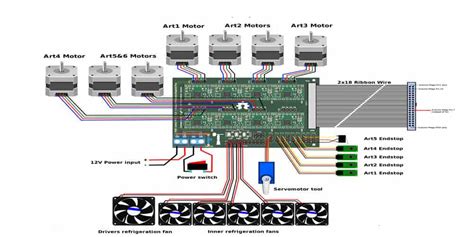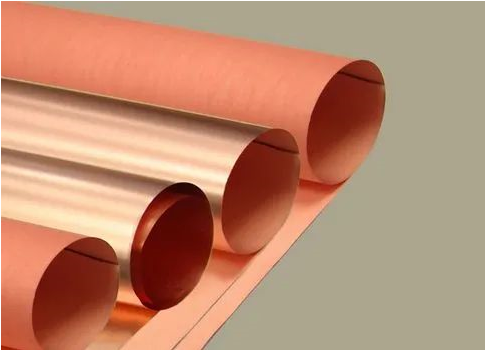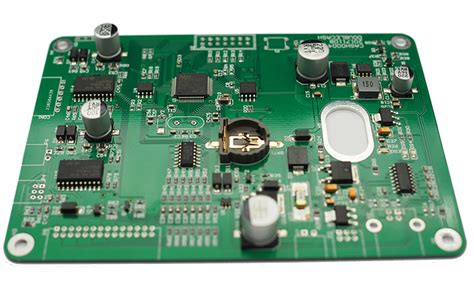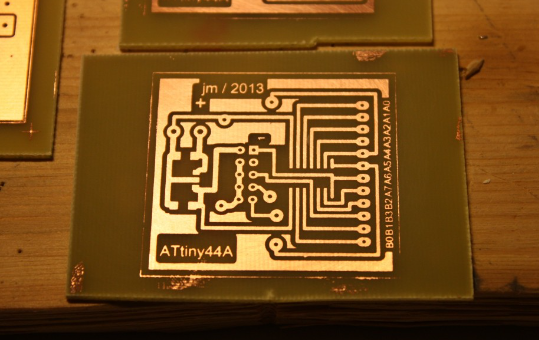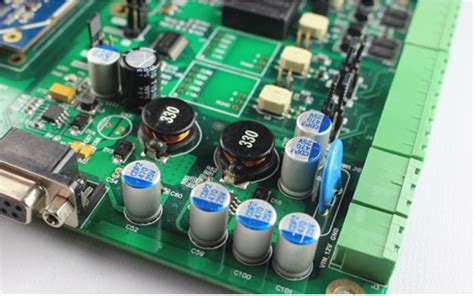Advancements in Printed Wiring Board Assembly Techniques

Key Takeaways
The landscape of pcb assembly is rapidly evolving, driven by a confluence of innovative methods and advanced technologies. One of the primary insights from recent developments in pcba is the significant emphasis on enhancing production efficiency. Techniques such as automated soldering and the use of robotic assembly systems have demonstrated remarkable improvements in throughput. Additionally, the integration of machine vision for quality control ensures that defects are identified and addressed promptly, which boosts overall production quality.
Another key takeaway is the introduction of flexible manufacturing systems that adapt to varying production demands. This flexibility allows manufacturers to maintain high-quality standards while minimizing waste. The focus on sustainability is also reshaping the printed wiring board assembly domain, as companies seek eco-friendly materials and practices that contribute to reducing their environmental footprint.
Moreover, data analytics now plays a vital role in optimizing the supply chain and production processes. By analyzing data patterns from previous assemblies, manufacturers can predict potential failures and implement preventative measures, ultimately leading to cost reductions.
| Aspect | Advancement |
|---|---|
| Production Efficiency | Automated soldering and robotic assembly systems |
| Quality Control | Machine vision integration for defect detection |
| Flexibility | Adaptive manufacturing systems for varying demands |
| Sustainability | Eco-friendly materials and practices |
| Predictive Analytics | Data analysis for failure prediction and preventative action |
In summary, understanding these key insights into technology-driven advancements in pcb assembly can empower professionals in the electronics manufacturing sector to adapt their strategies effectively for improved performance and sustainability.

Introduction to Printed Wiring Board Assembly
Printed wiring board assembly, commonly referred to as pcb assembly or pcba, is a critical process in the manufacturing of electronic devices. It involves the precise mounting of electronic components onto a printed circuit board, enabling the creation of functional and efficient electronic systems. The evolution of this process has been driven by advancements in technology, allowing for more intricate designs and higher component densities. As manufacturers strive to keep pace with the ever-increasing demand for compact and powerful electronics, innovations in pcb assembly techniques play a pivotal role. The integration of advanced materials, such as flexible circuits, has enhanced design flexibility while promoting weight reduction. Furthermore, employing these new technologies can lead to improved efficiencies and production quality.
"Adopting innovative pcba methodologies not only streamlines production but also significantly lowers costs."
As industries continue to innovate, embracing automation and robotics within the pcb assembly process lays the foundation for enhanced accuracy and faster turnaround times. By automating repetitive tasks, manufacturers can minimize human error, ultimately improving product reliability. This ongoing transformation marks an important step forward in meeting the increasing complexities of modern electronics while ensuring competitive pricing.
In summary, an understanding of current trends in pcb assembly techniques is essential for professionals in electronics manufacturing, as these advancements directly impact production methodologies and market viability.
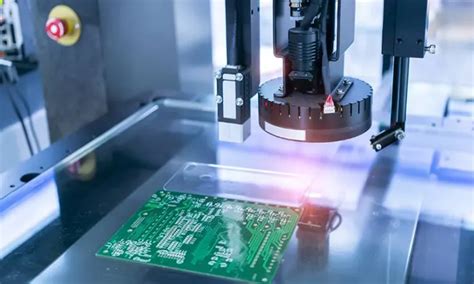
Innovative Methods in Printed Wiring Board Assembly
In recent years, pcb assembly techniques have evolved significantly, driven by the need for higher efficiency and quality in electronics production. One of the most exciting developments in pcba is the integration of advanced materials and innovative design methodologies. For instance, using flexible substrates allows for more streamlined designs, enabling more compact circuit layouts without compromising functionality. Another notable method is the implementation of 3D printing technology, which has begun to revolutionize printed wiring board assembly by allowing for rapid prototyping and customization of components. This approach not only accelerates the development process but also facilitates the use of complex geometries that traditional manufacturing methods may struggle to achieve.
Moreover, innovations such as automated optical inspection (AOI) systems have greatly enhanced production quality. These systems provide real-time feedback on defects during the pcb assembly process, significantly reducing waste and rework costs. The introduction of machine learning algorithms into these systems further optimizes defect detection and reduces the likelihood of errors becoming costly mistakes.
Additionally, modular assembly techniques are gaining traction, allowing manufacturers to easily swap out components based on changing demands or technological advancements. This flexibility supports a dynamic production environment and addresses varying market needs without extensive retooling.
Overall, the continuous evolution of pcba methods reflects a broader movement towards smart manufacturing, where adaptability and efficiency are key drivers in enhancing production quality while maintaining cost-effectiveness in electronics manufacturing.
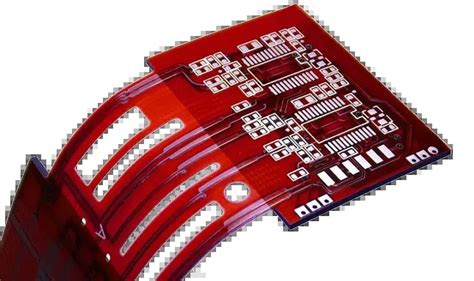
Enhancing Production Quality through New Technologies
In the realm of pcb assembly, the integration of new technologies has significantly influenced production quality and efficiency. Techniques such as automated optical inspection (AOI) and machine vision systems have revolutionized the way pcba processes are monitored and controlled. These advancements lead to enhanced accuracy in component placement, reducing the number of defects that commonly occur during assembly. Furthermore, employing advanced materials such as high-density interconnect (HDI) boards offers improved performance due to their superior signal integrity and thermal management.
Another critical advancement is the utilization of predictive analytics in manufacturing operations. By analyzing data generated throughout the pcb assembly process, manufacturers can identify potential issues before they escalate, allowing for timely interventions that prevent defects and improve overall production quality. Additionally, incorporating robotics within assembly lines streamlines workflows, minimizes human error, and increases throughput.
The merging of pcba processes with Industry 4.0 principles has also resulted in smarter manufacturing environments where real-time monitoring and feedback loops are possible. This adaptability not only ensures higher consistency in output but also facilitates rapid response to changes in market demand or design specifications.
Overall, these innovative technologies play a pivotal role in enhancing production quality within electronics manufacturing, ensuring that products meet rigorous standards while also achieving cost-saving efficiencies. By embracing these methods, manufacturers can position themselves strongly within a competitive landscape while delivering superior products to consumers.
Cost Reduction Strategies in Electronics Manufacturing
In the rapidly evolving field of electronics manufacturing, finding effective cost reduction strategies is paramount for companies striving to maintain a competitive edge. One efficient approach involves optimizing pcb assembly processes. By integrating advanced techniques such as modular design and lean manufacturing, organizations can significantly reduce production costs while enhancing overall efficiency. Moreover, embracing technological innovations like automated optical inspection (AOI) and real-time monitoring systems allows manufacturers to minimize waste and improve quality assurance during the pcba processes. These methods not only streamline production but also decrease the likelihood of defects, leading to lower rework expenses. Additionally, the adoption of materials with better performance-to-cost ratios, such as high-density interconnects (HDI), can further ensure that manufacturing meets both economic and quality benchmarks. By focusing on these strategies, electronics manufacturers can achieve sustainable cost reductions while maintaining high standards in their printed wiring board assembly services.
The Role of Automation in Printed Wiring Board Assembly
The integration of automation in pcb assembly has revolutionized the way electronics are manufactured, leading to significant enhancements in efficiency and accuracy. With the advent of advanced robotics and automated systems, the traditional methods of pcba have evolved to accommodate faster production rates while ensuring high standards of quality. Automated inspection techniques, such as machine vision systems, play a crucial role in identifying defects early in the production process, which helps minimize errors and reduce rework costs. Additionally, automated soldering systems can apply precise amounts of solder at controlled temperatures, ensuring optimal connections and extending the life expectancy of electronic components. Furthermore, automation facilitates better data collection throughout the manufacturing process, empowering engineers to analyze production metrics and continuously improve workflows. As these technologies advance, manufacturers are likely to see enhanced reliability in their pcb assembly processes and a notable reduction in overall operational costs. Embracing automation will not only streamline production but also solidify a competitive advantage in the ever-evolving electronics market.
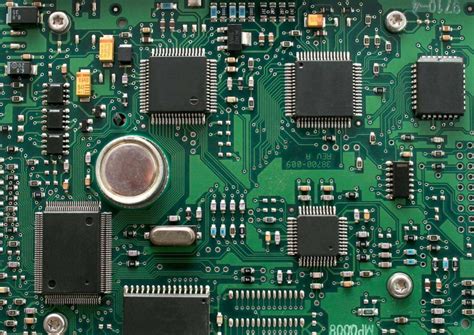
Future Trends in Printed Wiring Board Assembly Techniques
As the electronics industry continues to evolve, the pcb assembly landscape is witnessing transformative trends that promise to enhance both efficiency and quality. One of the most significant shifts is the integration of advanced materials and nanotechnology into pcba processes. These materials not only provide improved conductivity and strength but also facilitate miniaturization, allowing for more compact designs without compromising performance. Additionally, the adoption of automation and robotics in pcb assembly is set to revolutionize production lines by streamlining operations, reducing human error, and increasing throughput. This automation trend is particularly crucial as the demand for faster turnaround times grows in today’s fast-paced market. Moreover, the incorporation of AI-driven analytics will enable manufacturers to predict potential issues in the assembly process before they arise, ensuring consistent quality control. As sustainability becomes a focal point for many companies, future techniques will likely emphasize eco-friendly practices that minimize waste while optimizing resource use in pcba operations. Overall, these trends indicate a shift toward more intelligent and efficient manufacturing practices within the realm of printed wiring board assembly, paving the way for innovative products and solutions in electronics.
Case Studies: Successful Implementations of Advanced Techniques
The electronics manufacturing sector has witnessed remarkable transformations with pcb assembly techniques that leverage innovative approaches to enhance overall efficiency. One compelling case study involves a leading manufacturer that adopted a robotic-assisted assembly process in its pcba operations. By integrating advanced robotics, the company significantly reduced assembly time and improved precision, leading to fewer defects during production. Another case study highlights the use of flexible circuit technology in conjunction with traditional printed wiring board assembly methods. A prominent electronics firm implemented this hybrid approach, resulting in a substantial decrease in material costs and waste, while simultaneously increasing product functionality and design versatility.
Additionally, the incorporation of smart inspection systems has played a crucial role in quality assurance for pcb assemblies. A notable example is a global tech company that utilized real-time monitoring and AI-driven analysis during the pcba process. This initiative led to enhanced detection of potential errors before they escalated into larger issues, ultimately maintaining high standards of production quality. These case studies underscore the effectiveness of adopting advanced techniques within printed wiring board assembly, showcasing how innovation not only transforms operational processes but also significantly impacts product reliability and manufacturing costs. As more companies turn to these strategies, the landscape of electronics manufacturing continues to evolve dramatically, reflecting broader trends towards smarter and more efficient manufacturing solutions.
Conclusion: The Impact of Advancements on the Electronics Industry
The evolution of pcb assembly techniques has profoundly influenced the electronics industry, ushering in an era marked by efficiency and precision. As innovations continue to emerge, the integration of advanced pcba methods not only streamlines production processes but also enhances product reliability and performance. These advancements have allowed manufacturers to adopt more flexible design practices, culminating in a more tailored approach to consumer needs. Furthermore, the incorporation of automation and sophisticated software tools has significantly reduced error rates, ensuring higher quality standards in production. The results are tangible: decreased operational costs, faster turnaround times, and improved resource allocation across various stages of production. This progressive shift is paving the way for a future where manufacturers are equipped with tools that not only meet current demands but also anticipate future trends in technology. Ultimately, the impact of these advancements is evident in the way electronic components are designed and assembled today—leading to better products that adapt to an ever-changing market landscape.
Conclusion: The Impact of Advancements on the Electronics Industry
The advancements in pcb assembly techniques have significantly transformed the landscape of electronics manufacturing. As the demand for pcba continues to escalate, manufacturers are adopting innovative methods that not only enhance production quality but also streamline processes. With the introduction of advanced technologies, companies are witnessing an increase in efficiency, resulting in shorter lead times and higher throughput. Moreover, these advancements have allowed for more precise assembly, minimizing defects and improving overall product reliability. The incorporation of automation in pcb assembly has further revolutionized the industry by reducing manual errors and optimizing labor costs. As these technologies continue to evolve, it is clear that they will play a crucial role in shaping the future of electronics manufacturing, allowing companies to remain competitive in a rapidly changing market environment. Ultimately, the impact of such advancements on the electronic industry cannot be overstated as they lay the groundwork for ongoing innovation and sustainability within this vital sector.
FAQs
What is PCB assembly and why is it important?
PCB assembly, often referred to as PCBA, is the process of connecting various electronic components onto a printed circuit board (PCB). This process is vital for ensuring the functionality of electronic devices, as it integrates the various parts required for electrical operation.
What are the latest advancements in PCB assembly techniques?
Recent advancements in pcb assembly techniques include enhanced automation processes, advanced inspection methods, and the use of machine learning algorithms to predict production efficiencies. These innovations lead to improved consistency and reliability in product quality.
How do new technologies enhance production quality in PCBA?
New technologies such as automated optical inspection (AOI) and X-ray inspection help identify defects early in the PCBA process. These tools ensure only high-quality products move forward in manufacturing, thus reducing waste and rework.
What cost reduction strategies can be applied to electronics manufacturing?
Implementing lean manufacturing principles, utilizing surface mount technology (SMT), and adopting efficient supply chain management practices can significantly reduce costs associated with pcb assembly. Automation also plays a critical role by minimizing labor costs while increasing throughput.
How does automation impact PCB assembly processes?
The role of automation in pcb assembly is transformative. It increases production speed, reduces human error, and optimizes workflows. Machines designed for specific tasks can perform with precision that often surpasses human capabilities.
For more insights into printed wiring board assembly, please click here: Andwin PCB

